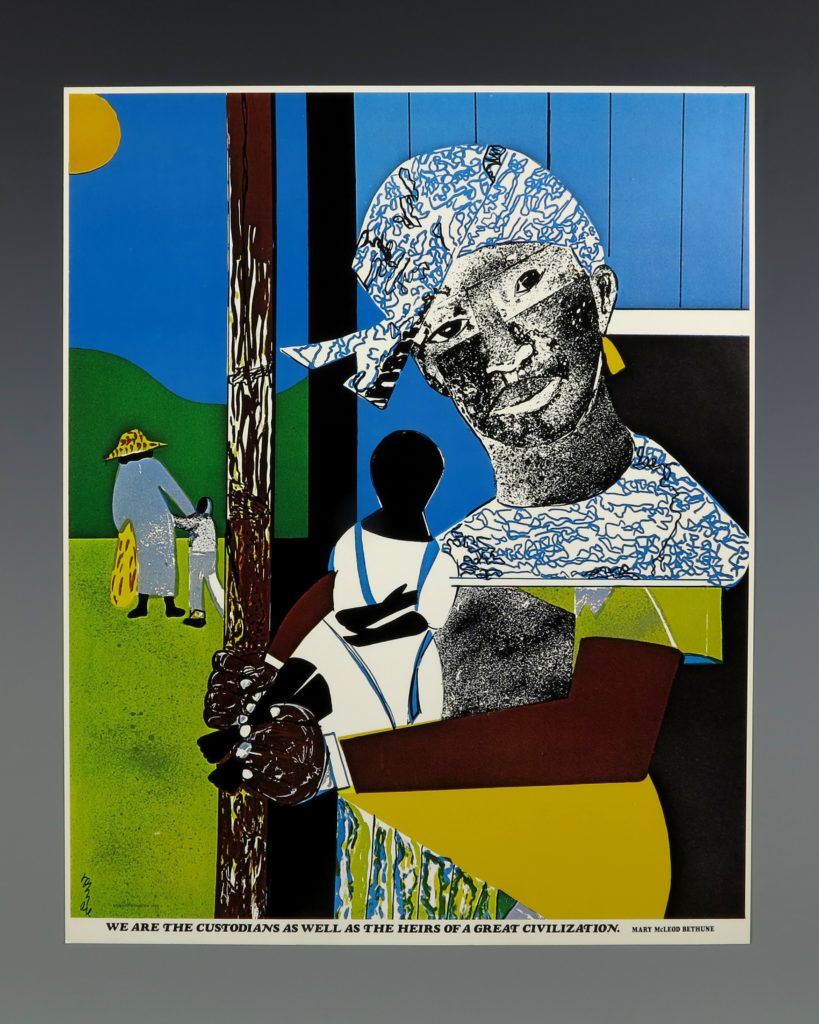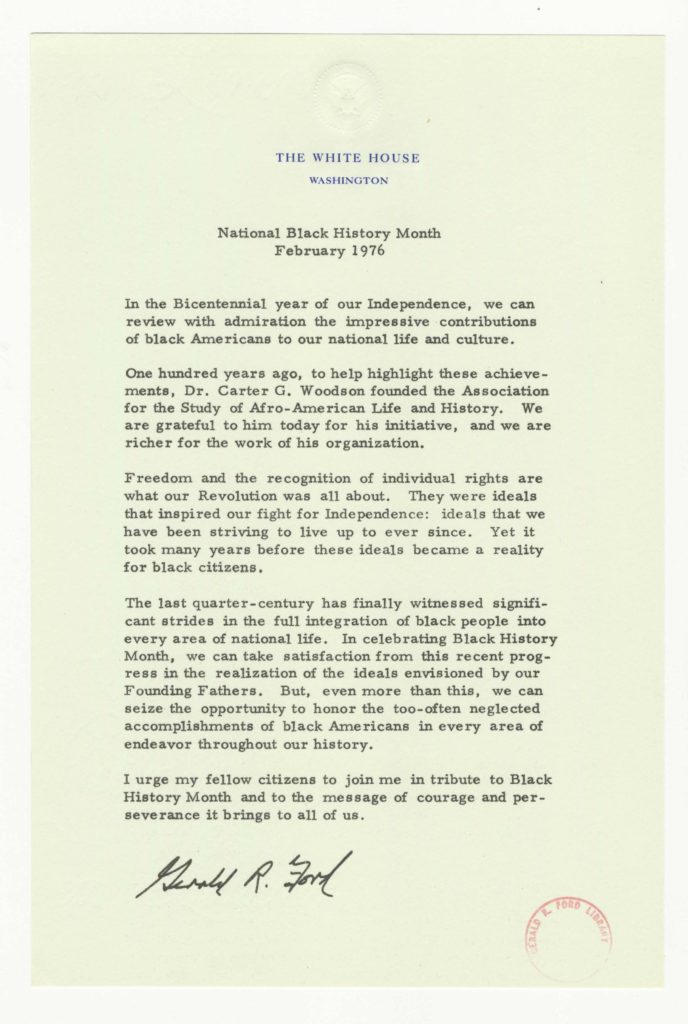On February 10, 1976, President Gerald R. Ford issued a message recognizing Black History Month, becoming the first President to do so. The moment was decades in the making. In 1926 historian, author, and activist Dr. Carter G. Woodson introduced “Negro History Week.” Woodson, who had founded the Association for the Study of Negro Life and History (now the Association for the Study of African American Life and History, ASALH) ten years earlier, chose the month of February to honor the birthdays of two prominent abolitionists: Frederick Douglass and Abraham Lincoln. The holiday gained national recognition in the 1960s, when activists of the Civil Rights Movement brought Negro History Week to college campuses across the country.
Upon taking office, Ford and his administration strategically sought to increase outreach to the Black community and other minority communities. As President, he stated that, “The United States Government, under the Constitution and the law, is committed to the guarantee of the fundamental rights of every American. My Administration will preserve these rights and work toward the elimination of all forms of discrimination against individuals on the basis of their race, color, religion, national origin, or sex.” In August 1974, Ford signed legislation amending the Voting Rights Act of 1965. He also created new positions within the administration like the Special Assistant for Ethnic Affairs, with the goal of increasing communication between government officials and ethnic communities across the nation. In 1975, President Ford signed a resolution recognizing Black Awareness Week, urging all Americans to “recognize the important contribution made to our nation’s life and culture by Black citizens.”
The following year, the ASALH urged the President to issue a proclamation recognizing Black History Month. Ford instead chose to issue a Presidential message. President Ford called upon the public to “seize the opportunity to honor the too-often neglected accomplishments of Black Americans in every area of endeavor throughout our history.” In subsequent years, Presidents have continued to share their own messages honoring Black History Month. In 1986, Congress passed a Public Law designating February as “National Black History Month.”

2004.794.3
Courtesy of Gerald R. Ford Presidential Museum
Timing was everything in Ford’s decision to recognize Black History Month in 1976. That year, Americans were looking back at the country’s past 200 years and the Bicentennial commemoration became an opportunity to question the relationship between the past and the present. Activists and historians started important conversations about not only the legacies of the American Revolution, but which groups were traditionally included or excluded from stories of the nation’s history. These conversations, in turn, informed many Bicentennial efforts. As President Ford stated in his message recognizing Black History Month: “In the Bicentennial year of our Independence, we can review with admiration the impressive contributions of black Americans to our national life and culture.”

Eliska Hasek Files, Box 1, Folder “National Black History Month Message, 1976.”
NAID: 16637977
Courtesy of Gerald R. Ford Presidential Library
In subsequent years, Presidents have continued to share their own messages honoring Black History Month. In 1986, Congress passed a Public Law officially designating February as National Black History Month.
Author: Dr. Mirelle Luecke

The question is: Which President made Black History, not who made Black History Month.
I would offer that President Lyndon Baines Johnson’s “Great Society”is responsible for moving Blacks ahead like no other Presidential Action up to that time!